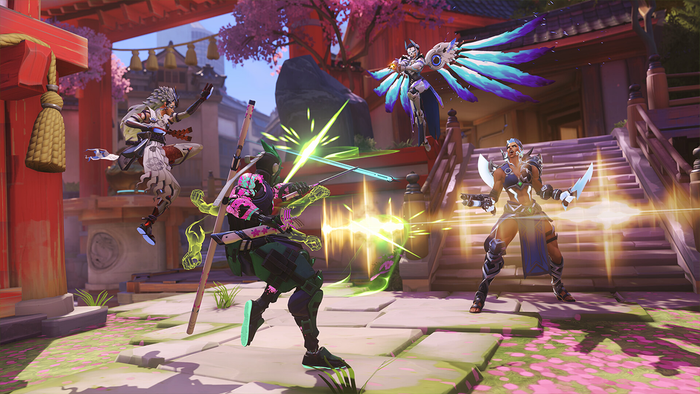Gamasutra analyst Matt Matthews previously looked at how the imminent launch of the Nintendo 3DS XL might affect the company's handheld sales. Now, four months later, we have an answer of sorts.

Last week Nintendo released information about the first half of its current fiscal year, and as a numbers kind of person, I always enjoy adding the latest shipment figures to my personal trove of data. When I last looked at the state of Nintendo's handheld business back in June, we were looking at how the imminent launch of the Nintendo 3DS XL might affect the company's handheld sales. Now, four months later, we have an answer of sorts. This time last year, when the Nintendo 3DS had been out for less than three quarters, Nintendo had shipped 6.68 million systems worldwide. That includes shipments after the August 2011 price cut. By the end of 2011, the company had shipped 15.04 million systems in essentially 10 months. During the past 12 months, which also includes the October - December 2011 period, total shipments for the Nintendo 3DS and 3DS XL combined reached 15.51 million systems. That's a rather modest 3 percent increase from the system's former peak shipment figure. So, the upshot is that 3DS shipments are at their highest volume ever, but it took the introduction of the 3DS XL and the rush of sales created by that launch to reach that level.  In terms of the health of Nintendo's overall handheld hardware sales, we can look back over the past 11.5 years for some perspective. Starting with the Game Boy Advance, which shipped at the very end of March 2001 in Japan, the company's handheld system sales over any 12-month period have ranged from just over 14 million units during calendar 2002 to a peak of 32 million systems in calendar 2008. That spans three systems - the Game Boy Advance, the Nintendo DS, and the Nintendo 3DS - as well as their many revisions. The graph below shows this history as a trailing-twelve-month moving average. Each point on this graph represents sales from the previous 12 months of sales.
In terms of the health of Nintendo's overall handheld hardware sales, we can look back over the past 11.5 years for some perspective. Starting with the Game Boy Advance, which shipped at the very end of March 2001 in Japan, the company's handheld system sales over any 12-month period have ranged from just over 14 million units during calendar 2002 to a peak of 32 million systems in calendar 2008. That spans three systems - the Game Boy Advance, the Nintendo DS, and the Nintendo 3DS - as well as their many revisions. The graph below shows this history as a trailing-twelve-month moving average. Each point on this graph represents sales from the previous 12 months of sales.  (Note: During the early years of the Game Boy Advance, Nintendo provided its hardware sales figures every six months instead of quarterly, so while the data there is correct, it is also at a lower resolution than the quarterly data I have starting in late 2003.) Viewed as above, we can see the magnitude of the phenomenon that was the Nintendo DS. Even when Game Boy Advance shipments went to zero, sales of the Nintendo DS were still nearly twice the size of its predecessor's peak sales. This is also important perspective against which to measure Nintendo's handheld business. Prior to the success of the Nintendo DS, Nintendo's handhelds were shipping around 14 - 18 million units every 12 months. Since the launch of the Nintendo 3DS, they've been shipping around 19 – 21 million units every 12 months. I don't believe every Nintendo handheld is going to be a Nintendo DS and the enormity of its success skewed my perception going into the launch of the 3DS. Now, over 18 months on, it looks like the company has a fairly stable business, one that happens to be a 20 to 30 percent larger than it was prior to the Nintendo DS. For the moment, I'm willing to take the view that Nintendo had an unforeseen hit with the Nintendo DS, the kind of success that simply cannot be reproduced on demand even by a company like Nintendo with deep pockets and a stable of strong brands. Now it's back to a successful business, just not on the scale of four years ago. Just compare the LTD sales graphs below for the Game Boy Advance, Nintendo DS, and Nintendo 3DS. The last two Nintendo handhelds were undoubtedly successful, so it seems natural to apply the same label to the 3DS, given its performance so far. And remember: The Nintendo DS had the benefit of two holiday seasons in its first 21 months, a luxury that the 3DS has not yet had.
(Note: During the early years of the Game Boy Advance, Nintendo provided its hardware sales figures every six months instead of quarterly, so while the data there is correct, it is also at a lower resolution than the quarterly data I have starting in late 2003.) Viewed as above, we can see the magnitude of the phenomenon that was the Nintendo DS. Even when Game Boy Advance shipments went to zero, sales of the Nintendo DS were still nearly twice the size of its predecessor's peak sales. This is also important perspective against which to measure Nintendo's handheld business. Prior to the success of the Nintendo DS, Nintendo's handhelds were shipping around 14 - 18 million units every 12 months. Since the launch of the Nintendo 3DS, they've been shipping around 19 – 21 million units every 12 months. I don't believe every Nintendo handheld is going to be a Nintendo DS and the enormity of its success skewed my perception going into the launch of the 3DS. Now, over 18 months on, it looks like the company has a fairly stable business, one that happens to be a 20 to 30 percent larger than it was prior to the Nintendo DS. For the moment, I'm willing to take the view that Nintendo had an unforeseen hit with the Nintendo DS, the kind of success that simply cannot be reproduced on demand even by a company like Nintendo with deep pockets and a stable of strong brands. Now it's back to a successful business, just not on the scale of four years ago. Just compare the LTD sales graphs below for the Game Boy Advance, Nintendo DS, and Nintendo 3DS. The last two Nintendo handhelds were undoubtedly successful, so it seems natural to apply the same label to the 3DS, given its performance so far. And remember: The Nintendo DS had the benefit of two holiday seasons in its first 21 months, a luxury that the 3DS has not yet had.  So the big picture here is that the rise of the mobile gaming market, the segment of the video game market that is now dedicated to smartphones and tablets, is largely the emigration of consumers who stopped in briefly to play Nintendo's hardware but had no long-term interest in that kind of platform. Nintendo's core market is still intact, and that they are still growing their market. The explosive growth of gaming on mobile platforms could mostly be additive to the overall market, without threatening Nintendo. (In this column I don't want to discuss the other big handhelds in the market, the PlayStation Portable and PlayStation Vita, but I think if anyone has suffered at the hands of Apple and Google it is Sony, not Nintendo. The Vita has finally passed 800,000 units here in the U.S., a full eight months after it launched.) Obviously, Nintendo would have liked to have kept as many of those transient consumers as possible, but they've still made a difficult transition and kept their business intact. That kind of experience could come in useful in the coming couple of years. In many ways the Nintendo Wii was for the home console business what the Nintendo DS was for the traditional handheld business. And with the Wii U waiting in the wings, comparisons will be inevitable. If you look carefully at the statements that Nintendo is making about their business plan for the Wii U, I think you can see that they're doing their best to learn from the weaknesses of the Wii and the stumbling transition from DS to 3DS. The courting of third-party publishers and long-term planning of first-party and third-party software releases evident in the latest investor Q&A is evidence enough that Nintendo is determined not to make the same mistakes again.
So the big picture here is that the rise of the mobile gaming market, the segment of the video game market that is now dedicated to smartphones and tablets, is largely the emigration of consumers who stopped in briefly to play Nintendo's hardware but had no long-term interest in that kind of platform. Nintendo's core market is still intact, and that they are still growing their market. The explosive growth of gaming on mobile platforms could mostly be additive to the overall market, without threatening Nintendo. (In this column I don't want to discuss the other big handhelds in the market, the PlayStation Portable and PlayStation Vita, but I think if anyone has suffered at the hands of Apple and Google it is Sony, not Nintendo. The Vita has finally passed 800,000 units here in the U.S., a full eight months after it launched.) Obviously, Nintendo would have liked to have kept as many of those transient consumers as possible, but they've still made a difficult transition and kept their business intact. That kind of experience could come in useful in the coming couple of years. In many ways the Nintendo Wii was for the home console business what the Nintendo DS was for the traditional handheld business. And with the Wii U waiting in the wings, comparisons will be inevitable. If you look carefully at the statements that Nintendo is making about their business plan for the Wii U, I think you can see that they're doing their best to learn from the weaknesses of the Wii and the stumbling transition from DS to 3DS. The courting of third-party publishers and long-term planning of first-party and third-party software releases evident in the latest investor Q&A is evidence enough that Nintendo is determined not to make the same mistakes again.
About the Author(s)
You May Also Like









